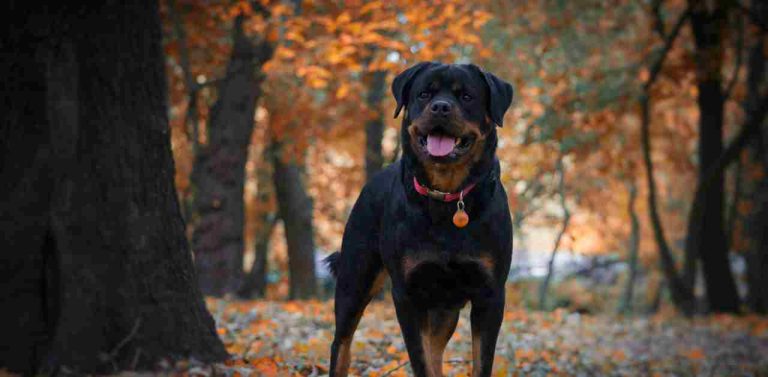Rottweilers are a breed that commands attention with their powerful presence and striking appearance. If you are considering adding a Rottweiler to your family, you may be curious about how big these dogs can grow, especially when it comes to full-grown males. In this article, we will explore the size and dimensions of full-grown male Rottweilers, shedding light on their impressive stature and characteristics.
Contents
- 1 Size of Full-Grown Male Rottweilers
- 2 Average Height
- 3 Average Weight
- 4 Muscular Build and Body Proportions
- 5 Full Grown Male Rottweiler Pictures
- 6
- 7 Factors Influencing Size Variations
- 8 1. Genetics
- 9 2. Nutrition
- 10 3. Exercise
- 11 4. Health
- 12
- 13 Growth Stages of Male Rottweilers
- 14 1. Puppy Stage (0-6 months)
- 15 2. Adolescent Stage (6-18 months)
- 16 3. Adult Stage (18 months and beyond)
- 17
- 18 Size Variations
- 19 Smaller Rottweilers
- 20 Larger Rottweilers
- 21
- 22 Caring for a Full Grown Male Rottweiler
- 23 Nutrition:
- 24 Exercise:
- 25 Veterinary Care:
- 26 Socialization and Training:
- 27
- 28 Conclusion
Size of Full-Grown Male Rottweilers
When it comes to determining the size of full-grown male Rottweilers, several factors come into play. These factors include genetics, diet, exercise, and overall health. While it’s important to note that individual Rottweilers can vary in size, we can establish general guidelines based on breed standards and common characteristics.
Average Height
The average height of a full-grown male Rottweiler typically ranges between 24 to 27 inches (61 to 69 cm) at the shoulder. This measurement is taken from the highest point of the shoulder blades, known as the withers. However, it’s important to remember that some male Rottweilers may fall slightly below or above this average height range.
Average Weight
When it comes to the weight of full-grown male Rottweilers, there is also a range to consider. On average, adult male Rottweilers typically weigh between 95 to 135 pounds (43 to 61 kg). However, it’s crucial to understand that individual Rottweilers may fall outside this weight range due to various factors, including genetics, metabolism, and overall body composition.
Muscular Build and Body Proportions
One of the defining characteristics of full-grown male Rottweilers is their muscular build and sturdy body proportions. These dogs have a powerful and well-developed physique, with broad chests and strong hindquarters. Their robust frame is a testament to their strength and athletic abilities.
Full Grown Male Rottweiler Pictures
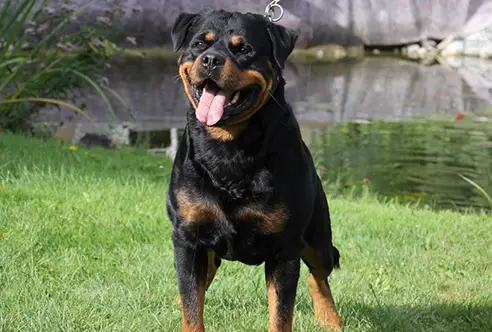
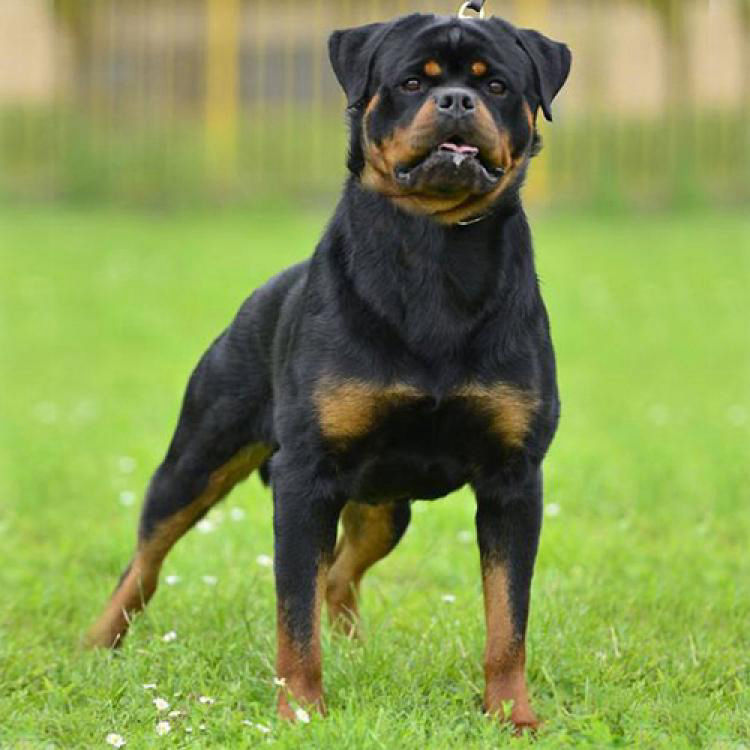

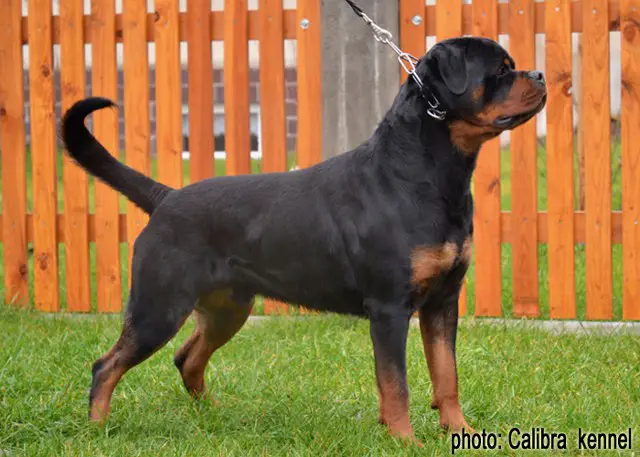
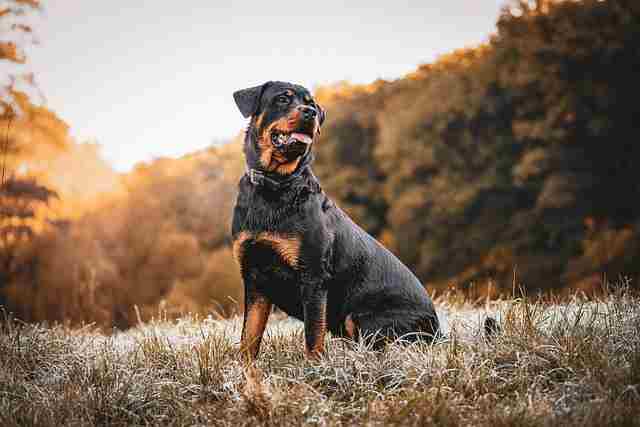
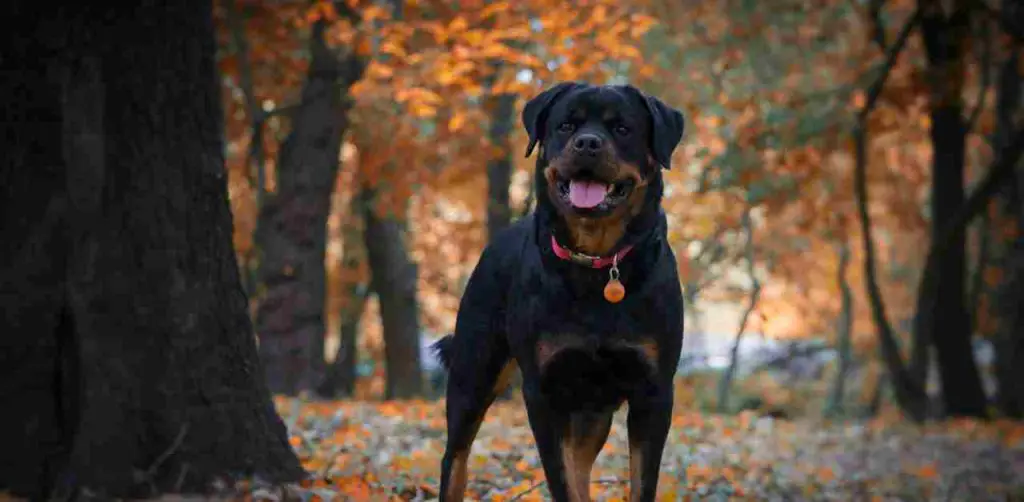
Factors Influencing Size Variations
1. Genetics
The genetic background of a Rottweiler plays a significant role in determining its size. Rottweilers with larger parents or ancestors are more likely to be on the larger end of the size spectrum. It is essential to obtain a Rottweiler from reputable breeders who prioritize responsible breeding practices and pay attention to the size characteristics of their dogs.
2. Nutrition
Proper nutrition is crucial for healthy growth and development in Rottweilers. A well-balanced diet, rich in high-quality protein and essential nutrients, can contribute to optimal size and overall well-being. Consult with your veterinarian or a professional animal nutritionist to determine the most suitable diet for your Rottweiler, considering their age, activity level, and specific nutritional needs.
3. Exercise
Regular exercise is vital for maintaining a healthy weight and promoting muscle development in Rottweilers. Engaging in physical activities such as daily walks, play sessions, and interactive games not only helps keep your Rottweiler physically fit but also aids in their mental stimulation. However, it’s important to strike a balance and avoid excessive exercise during their growing stages, as it can strain their joints and potentially affect their growth.
4. Health
Certain health conditions or underlying medical issues can affect a Rottweiler’s growth potential. Regular veterinary care, including routine check-ups and vaccinations, is essential to monitor their overall health and detect any potential problems early on. Additionally, providing them with preventive measures against common health issues such as hip dysplasia, a condition prevalent in larger breeds like Rottweilers, can help ensure their well-being and proper growth.
Growth Stages of Male Rottweilers
Understanding the growth stages of male Rottweilers can provide further insight into their size development. Here are the key growth stages:
1. Puppy Stage (0-6 months)
During this stage, Rottweiler puppies experience rapid growth. They undergo significant changes in size and development. At around 8 weeks of age, a male Rottweiler puppy typically weighs between 15 to 20 pounds (7 to 9 kg). By the age of 6 months, their weight can range from 35 to 60 pounds (16 to 27 kg), with some individual variations based on genetics and other factors.
2. Adolescent Stage (6-18 months)
As Rottweilers transition into adolescence, their growth rate begins to slow down. However, they continue to gain muscle mass and fill out. By 12 months, a male Rottweiler usually weighs between 70 to 100 pounds (32 to 45 kg) and is well on their way to reaching adult size. During this stage, it is crucial to provide them with appropriate nutrition and exercise to support their ongoing growth and development.
3. Adult Stage (18 months and beyond)
By the time a male Rottweiler reaches adulthood, they have usually reached their full height and weight potential. However, keep in mind that muscle development can continue for a few more years, leading to a more robust and well-defined physique. Regular exercise and a balanced diet should still be maintained to ensure their overall health and prevent any potential weight-related issues.
Size Variations
It is important to note that not all male Rottweilers will fit within the average size range mentioned earlier. Some Rottweilers may be smaller or larger based on their genetics and other factors we have discussed.
Smaller Rottweilers
Some male Rottweilers may fall on the smaller end of the size spectrum due to genetics or other factors. These smaller Rottweilers can still be healthy, loving companions, and their size should not be a cause for concern. However, it’s advisable to consult with a veterinarian to ensure they are not experiencing any growth-related health issues.
Larger Rottweilers
On the other hand, some male Rottweilers may grow larger than the average size range. These individuals may have a genetic predisposition for larger size or may have received exceptional care and nutrition during their growth stages. It is important to note that larger Rottweilers require additional attention to their joint health and overall well-being due to the increased stress on their bodies.
Caring for a Full Grown Male Rottweiler
Caring for a full-grown male Rottweiler involves providing them with proper nutrition, regular exercise, routine veterinary care, and socialization. Here are a few key considerations:
Nutrition:
A balanced and nutritious diet is crucial for maintaining the health and well-being of a full-grown male Rottweiler. Consult with your veterinarian to determine the appropriate diet, portion sizes, and feeding schedule based on their individual needs and activity level.
Exercise:
Full-grown male Rottweilers have moderate exercise requirements. Regular exercise, such as daily walks, playtime, and mental stimulation activities, can help keep them physically and mentally fit. However, it’s important to avoid overexertion, particularly in hot weather, as Rottweilers are prone to overheating.
Veterinary Care:
Routine veterinary check-ups are essential for monitoring the health of your full-grown male Rottweiler. Regular vaccinations, parasite prevention, dental care, and early detection of any potential health issues are crucial for their well-being.
Socialization and Training:
Socialization and training should continue throughout a Rottweiler’s life, even as they reach full size. Expose your Rottweiler to different environments, people, and other animals to help them develop good manners and become well-rounded individuals. Ongoing training sessions can reinforce positive behaviors and ensure they remain obedient and responsive.
Conclusion
Full-grown male Rottweilers exhibit a powerful and robust physique, with an average height ranging from 24 to 27 inches at the shoulder and a weight between 95 to 135 pounds. However, it’s important to remember that individual Rottweilers may vary in size due to genetics, nutrition, exercise, and overall health. Providing proper care, including nutrition, exercise, and routine veterinary attention, is key to maintaining their health and well-being.
When considering a full-grown male Rottweiler as a companion, it’s essential to appreciate their size while also recognizing their temperament, behavior, and overall suitability for your family. With proper care and attention, a full-grown male Rottweiler can bring joy, loyalty, and companionship to your life for years to come.
Meet the Author Mehmood Shah,
As an owner of Rottweiler for 10 years, I motivate and encourage people about this lovely breed.
We’re dedicated to providing you the detailed researched articles about Rottweiler, with an emphasis on Rottweiler Health, Training, and Exercises.
I started my journey with Rottweiler Time in 2021 and it has come a long way from its beginnings.
Thanks for Your Support.

